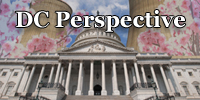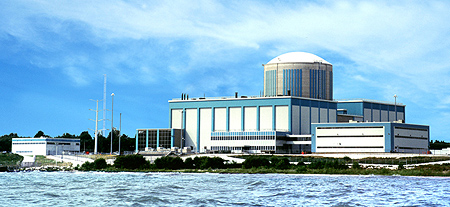The Fight to Prevent Nuclear Plant Closures Gathers Steam
 With the recent shutdown of four reactors and another scheduled closure later this year, there is increasing concern over nuclear plant shutdowns in the United States, and the idea of policy intervention to prevent further closures is gaining political traction.
With the recent shutdown of four reactors and another scheduled closure later this year, there is increasing concern over nuclear plant shutdowns in the United States, and the idea of policy intervention to prevent further closures is gaining political traction.
Nuclear matters
An organization called Nuclear Matters has been recently formed to address the issue. The organization is co-chaired by a pair of former US senators, Democrat Evan Bayh of Indiana and Republican Judd Gregg of New Hampshire (who is also a former governor of that state). The objective of the organization is to inform the public and policy makers about the benefits of existing nuclear power plants, and about the causes of the current economic struggles faced by some nuclear plants (benefits include reliability, grid stability, and reduced emissions of CO2 and other pollutants). The group is also trying to build political support for various policy remedies that may prevent further plant closures.
Many other notable political figures have joined the organization, including several who have often opposed or criticized nuclear power in the past, such as former Clinton administration Environmental Protection Agency chair Carol Browner. Another organization called the Center for Climate and Energy Solutions, or C2ES (formerly the Pew Center on Global Climate Change), headed by Eileen Claussen, has allied itself with Nuclear Matters in support of the cause. Many of these people and organizations have not been that supportive of new nuclear plant construction, but have a different view on the need to preserve existing nuclear plants, given that their closures will make climate change goals far more difficult to meet.
The group is currently suggesting policy initiatives in the following areas:
- New legislative, regulatory, and/or competitive market policies that recognize the zero-carbon-emissions value of existing nuclear energy plants;
- New legislative, regulatory, and/or competitive market policies that recognize the electric system reliability of existing nuclear energy plants;
- New efforts to enable rapid development of electric transmission capacity to better link existing nuclear energy plants to markets;
- New federal and state legislative and/or regulatory policies that curtail government subsidization of certain electric generation fuel sources to the detriment of other fuel sources; and
- Other similar policy initiatives that help improve the economic viability of today's nuclear energy plants.
Exelon
Exelon Corporation and its president Chris Crane have been involved for some time with the issue of struggling existing nuclear plants and what can be done to avoid closures. Exelon has argued that low natural gas prices and the presence of increasing amounts of intermittent, subsidized wind power have led to much lower market prices for power. Due to the subsidies, wind farms can even cause market prices to go negative at times (as they can afford a negative bid without losing money).
Exelon has called for phasing out the wind power subsidy. It has also at times called for some type of financial support of non-emitting, existing nuclear generation. This has caused some to accuse the company of hypocrisy. Crane has also called upon states to replace Renewable Portfolio Standards (that require specified fractions of overall generation to come from renewable sources) with Clean Energy Standards that treat all non-emitting generation sources equally. Exelon is also the initial source of funding for the Nuclear Matters organization.
Exelon has recently stated that it is considering closing several of its existing plants, such as Clinton and Quad Cities, since they have been unprofitable for some time due to persistently low natural gas prices and low market prices for power. Exelon has stated that it will make decisions on plant closures by the end of this year. (The US Energy Information Administration is now projecting the loss of six [unidentified] reactors before 2020, in addition to San Onofre, Crystal River, Kewanee, Vermont Yankee, and Oyster Creek. The Exelon plants are likely much of that list.)
More recently, however, Crane has stated that the financial picture for these plants has improved somewhat, due to increased natural gas prices and higher market prices for power. He also stated that he has reason to believe that the picture will continue to improve in the future, due to the upcoming EPA rollout of power plant CO2 emissions policies/standards and the growing recognition (after the Polar Vortex) that some value should be placed on reliable baseload generation. The EPA policies, which would mainly impact coal generation, may result in increased gas use (in lieu of coal) that would tend to raise natural gas prices and therefore market prices for power. Also, the promulgation of the standards would make it clear that utilities will face carbon constraints in the future, which should result in more value being placed on non-emitting generation. The recent elimination of the nuclear waste fee will also help somewhat, to the tune of 0.1 cents/kW-hr, straight to the bottom line.
On the subject of new nuclear plants, Crane has stated that he no longer sees much of a future for large plants (in non-regulated markets, at least). He stated that a new two-unit plant would cost ~$16 billion (i.e., ~$7,000/kW) and require that capital to be sunk for ~8 years before seeing any return (revenue). For such plants to compete with gas, gas would have to cost ~$13/MBTU, whereas Exelon believes that gas will remain under $6/MBTU for the foreseeable future. Crane now believes that the industry's best hope lies with small modular reactors (SMRs). One of the main reasons for this has to do with the much shorter project time frame that may be possible with SMRs (as low as two years, according to Crane). This much-shorter payback period for sunk capital affects the overall financial attractiveness tremendously.
One final note on Exelon; a few have even speculated that the company may possibly leave the nuclear generation business altogether. They point to Exelon's recent acquisition of Pepco Holdings as a sign that the company is shifting over to the regulated, utility (distribution) business and away from the power generation business; the reasons being that the regulated distribution business offers fairly high, stable profit margins whereas margins for generators (like nuclear) have been squeezed for some time by weak demand and low market prices for power. They argue that Exelon will either close or spin off all their nuclear units to another, specialized, operating company.
Questions
We've all been taught that nuclear plants have high initial capital costs but then have very low, stable operating costs-lower operating costs than any other source, with the possible exception of hydro. Given this, it's rather hard to understand how existing nuclear plants could ever struggle to compete, in any market, or against gas generation.
There are ongoing discussions as to whether low natural gas prices alone are to blame, or if subsidized wind, and the periodic negative pricing that results, is an important additional factor. Exelon has been arguing that subsidized wind is a significant factor, while others, such as Federal Energy Regulatory Commission commissioner John Norris, are arguing that it is not.
I have some difficulty with the notion that current natural gas prices are solely to blame for this, especially now that gas prices have risen back to almost $5/MBTU. In times past, such as the 1990s, natural gas prices were far lower than that (in inflation-adjusted terms), and there were few plant closures (with most of those being due to factors other than economics). Also, it was not too long ago that people were discussing whether or not NEW nuclear projects could be competitive with ~$5/MBTU gas. (There has been some inflation since then, but not that much.)
It seems clear to me that negative pricing, even over a fraction of the time, would have a significant impact on existing nuclear plants' financial performance. The only other reason why existing plants may be struggling now whereas they didn't before is that operating costs are increasing. Some data that I have found (here and here) suggests that this is indeed the case. Plant operating costs jumped after Three Mile Island (almost certainly due to a major increase in regulation), and costs have also increased over the past few years (to 2.4 cents/kW-hr from something like 1.8 cents a few years ago, as I recall). Post-911 security requirements have contributed to this. In addition, post-Fukushima requirements will add to this for many plants.
At times I find it so difficult to accept that existing plants might close due to economics (whereas new build has been discussed/assumed so recently) that I almost wonder if Exelon is bluffing when it threatens plant closures, in order to get more favorable market policies for those plants. If it does close plants (or even leave the nuclear generation business), it will feel like one more case of abandonment of (and lack of commitment to) nuclear by the main nuclear utilities-over short term economic issues. It would be reminiscent of Entergy's decision to close Vermont Yankee, after all of the legal and political struggles the company (successfully) went through.
Better policies
I support these policy initiatives, even if it turns out that most of these plants may not end up being shut down. It's a matter of fairness and correct, effective policy. Treating non-emitting sources (i.e., nuclear vs. wind) so differently is indefensible. Exelon is not being hypocritical as its critics like to suggest. Exelon's position is that either the wind subsidies should be removed OR nuclear plants should get some degree of financial support, to recognize nuclear's many benefits. Exelon was never asking for nuclear subsidies when there were no wind subsidies; it's the critics that are being hypocritical.
These market conditions are probably temporary, and nuclear plants generate large amounts of emission-free power, 24/7/365, for decades. For that reason, providing modest financial assistance to struggling nuclear plants, to reduce the likelihood of their closure, is probably one of the most cost effective CO2 reduction measures that will ever come along. It is also true that if current policies result in the creation of wind farms (that generate CO2-free power only a fraction of the time), but also cause the closure of nuclear plants that generate far more CO2-free power all the time, those policies will actually be counter-productive to the global warming effort. Imagine that-paying a lot of money for wind subsidies that result in increased CO2 emissions!
Regulations to blame?
As nuclear opponents often love to point out, both capital and operating costs for nuclear plants have been increasing over time. Estimated capital costs are almost double what initial estimates were ~10 years ago, even in inflation-adjusted terms. Now people are saying that gas needs to be $13/MBTU (vs. $5) for new nuclear to be competitive. New nuclear plants appear to be no less expensive than the (troubled) first round of plants, despite all we've heard about new plants being simpler, with fewer pumps and valves, etc. And, as discussed above, operating costs have also increased.
What could cause this? Generally speaking, costs go down with time, due to technological advancements and lessons learned (barring a dramatic increase in (inflation-adjusted) raw material or labor costs, neither of which explains nuclear's cost increases). The only thing that could really cause such increases in cost, over time, is increasing regulations, standards, and requirements.
While it's clear that policies should treat nuclear and other non-emitting sources the same, another area that should be explored by the people and organizations concerned about plant closures is why the operating costs for the struggling plants are high, why they've increased with time, and what can be done to reduce them.
Why are staffing levels so high (relative to other plant types)? Are all the regulations and requirements that drive these staffing levels and operating costs really necessary? As I suggested in earlier articles, we could use a bottom-up review for all nuclear regulations, that evaluates their cost effectiveness (e.g., dollars per life saved) relative to those applied to other energy sources and industries.
As an example, this article in The Atlantic interviews an elite soldier tasked with testing nuclear plant defenses. While many readers were probably alarmed to learn that he would sometimes succeed, the soldier pointed out that chemical plants are essentially not required to do anything, despite the fact that the potential consequences are actually at least as great as those for a nuclear plant. And there are a host of other facilities that could cause more deaths than a meltdown (refineries, dams, and even tall buildings) in the event of a successful attack. (This is especially true now that Fukushima taught us that the health impacts and loss of life for even a worst-case meltdown event are small to non-existent.) People should ask why only nuclear plants are required to demonstrate that they can repel a large force of dedicated attackers. Unless we're going to require every tall building in the United States to have enough security to meet such a requirement, the requirement shouldn't apply to nuclear plants either. These security requirements are a significant cost concern, especially for SMRs.
One source of imbalance?
The truth is that once regulations are promulgated, it is very hard to remove them. In general, relaxing regulations is all but politically impossible. It seems that other industries (such as the fossil industry) know this, and their response is to do everything in their power to prevent regulations from being adopted in the first place. And in many cases they have been very successful.
This article describes the amount of political and legal obstacles that face the Obama administration's new CO2 regulations for power plants. In this piece, Exelon's Crane states that the oldest, dirtiest fossil units have some of the lowest operating costs of all (~2.0 cents/kW-hr); a clear sign of how lax regulations have been (so far), and how non-existent the financial penalty for polluting has been.
Whereas promulgating even the most reasonable, cost-effective, and desperately needed regulations is always a huge battle on the fossil side, my understanding is there are few if any such obstacles on the nuclear side. The Nuclear Regulatory Commission simply decides whether or not to create new regulations. All industry can do is provide input (i.e., make suggestions), and pray that the regulator decides to be reasonable. No congressional battles or legal challenges. This political/legal difference is probably a major cause of the dramatically un-level regulatory playing field between nuclear and fossil fuels.
Conclusion
While I'm hopeful that few if any more nuclear plants will close, I hope that current concerns about nuclear plant closures lead to some changes in policy that give existing nuclear plants at least some tangible, financial credit for their many benefits, including reliability, grid stability, cost stability, and their non-polluting nature.
Given that renewables (especially wind) are well out of their infancy, there is no justification for treating non-polluting sources differently. If renewables subsidies and mandates are not eliminated or phased out, nuclear should be given some degree of support as well. Nuclear being given no advantage at all, even against old dirty coal plants, is indefensible. Ideally, policy, regulatory, and other changes that would reduce nuclear plant operating costs will also be explored. If the threat of the closure of a significant number of existing nuclear plants was required to spur these needed policy changes, so be it.

Kewaunee Power Station in Wisconsin, offline as of May 2013
_____________________

Hopf
Jim Hopf is a senior nuclear engineer with more than 20 years of experience in shielding and criticality analysis and design for spent fuel dry storage and transportation systems. He has been involved in nuclear advocacy for 10+ years, and is a member of the ANS Public Information Committee. He is a regular contributor to the ANS Nuclear Cafe.

